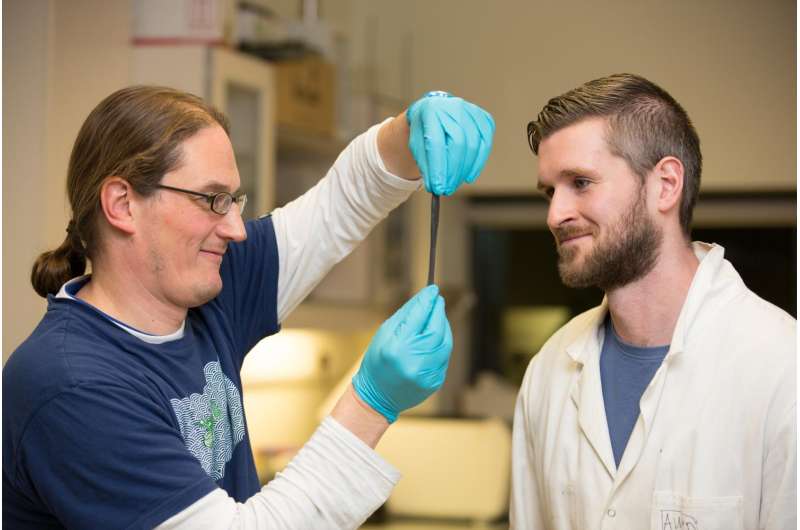State of the art sensors made from graphene and children's toy silly putty

Researchers in AMBER, the Science Foundation Ireland-funded materials science research centre, hosted in Trinity College Dublin, have used the wonder material graphene to make the novelty children's material silly putty (polysilicone) conduct electricity, creating extremely sensitive sensors. This world first research, led by Professor Jonathan Coleman from TCD and in collaboration with Prof Robert Young of the University of Manchester, potentially offers exciting possibilities for applications in new, inexpensive devices and diagnostics in medicine and other sectors. The AMBER team's findings have been published this week in the leading journal Science.
Prof Coleman, Investigator in AMBER and Trinity's School of Physics along with postdoctoral researcher Conor Boland, discovered that the electrical resistance of putty infused with graphene ("G-putty") was extremely sensitive to the slightest deformation or impact. They mounted the G-putty onto the chest and neck of human subjects and used it to measure breathing, pulse and even blood pressure. It showed unprecedented sensitivity as a sensor for strain and pressure, hundreds of times more sensitive than normal sensors. The G-putty also works as a very sensitive impact sensor, able to detect the footsteps of small spiders. It is believed that this material will find applications in a range of medical devices.
Prof Coleman said, "What we are excited about is the unexpected behaviour we found when we added graphene to the polymer, a cross-linked polysilicone. This material as well known as the children's toy silly putty. It is different from familiar materials in that it flows like a viscous liquid when deformed slowly but bounces like an elastic solid when thrown against a surface. When we added the graphene to the silly putty, it caused it to conduct electricity, but in a very unusual way. The electrical resistance of the G-putty was very sensitive to deformation with the resistance increasing sharply on even the slightest strain or impact. Unusually, the resistance slowly returned close to its original value as the putty self-healed over time."
He continued, "While a common application has been to add graphene to plastics in order to improve the electrical, mechanical, thermal or barrier properties, the resultant composites have generally performed as expected without any great surprises. The behaviour we found with G-putty has not been found in any other composite material. This unique discovery will open up major possibilities in sensor manufacturing worldwide."
Professor Mick Morris, Director of AMBER, said: "This exciting discovery shows that Irish research is at the leading edge of materials science worldwide. Jonathan Coleman and his team in AMBER continue to carry out world class research and this scientific breakthrough could potentially revolutionise certain aspects of healthcare."

More information: "Sensitive electromechanical sensors using viscoelastic graphene-polymer nanocomposites," Science, science.sciencemag.org/cgi/doi … 1126/science.aag2879
Journal information: Science
Provided by Trinity College Dublin


















